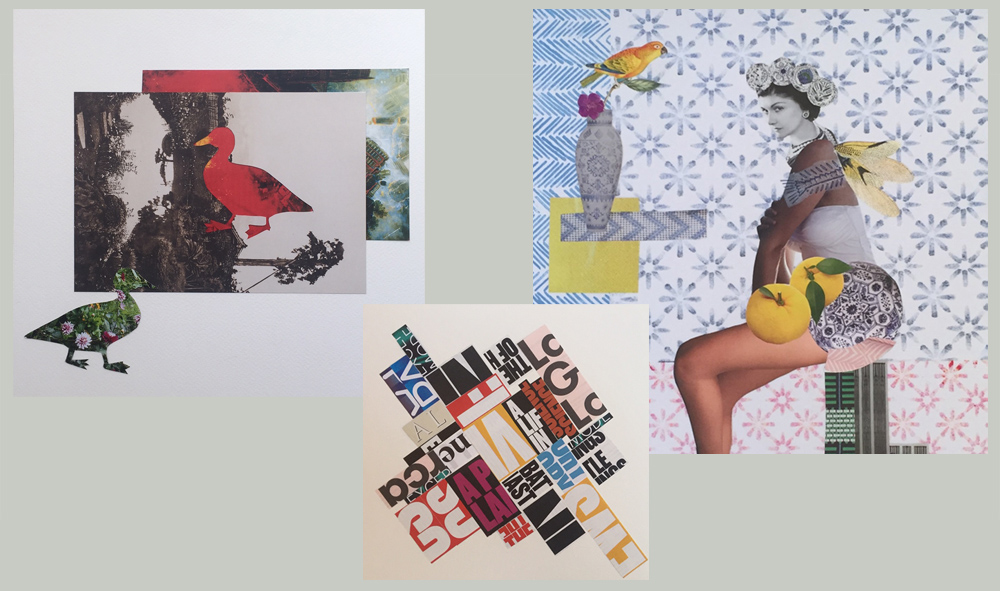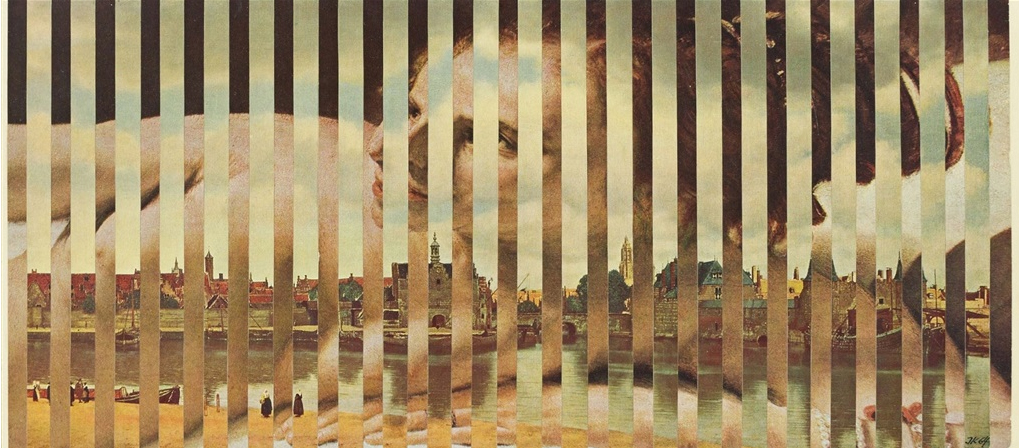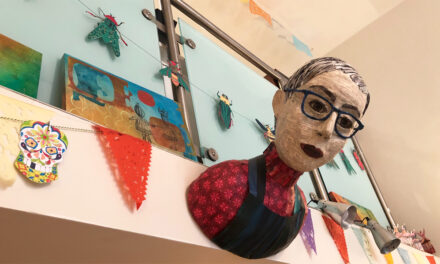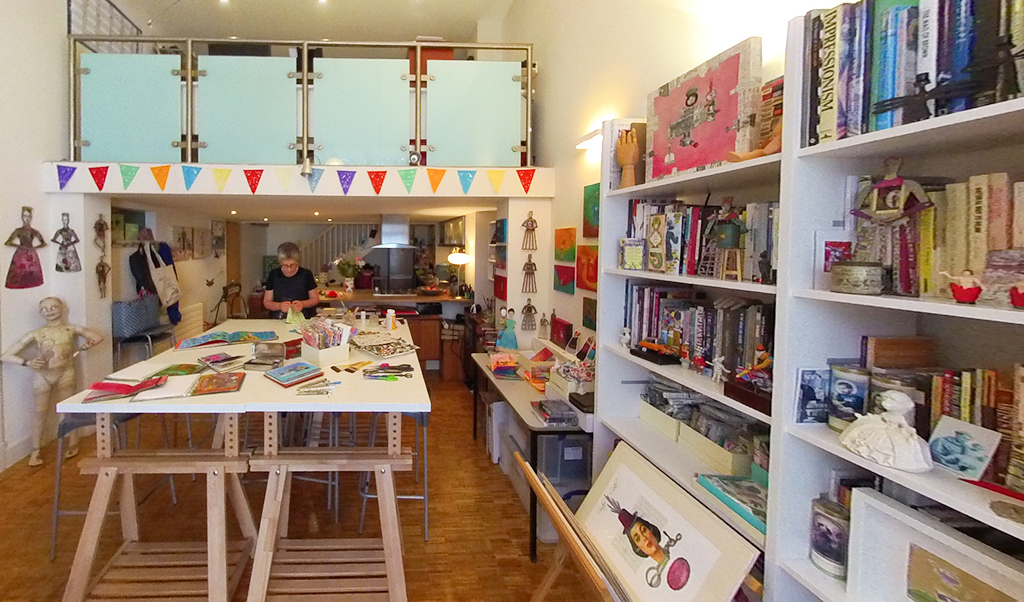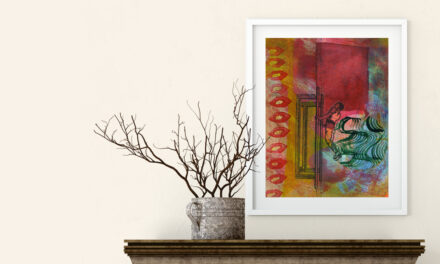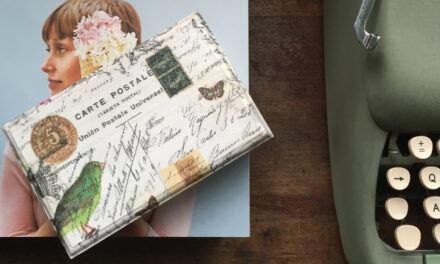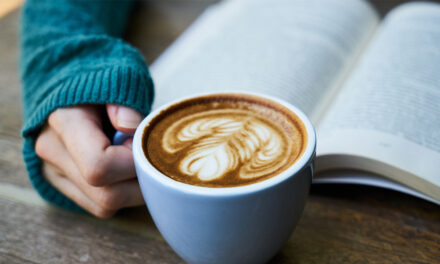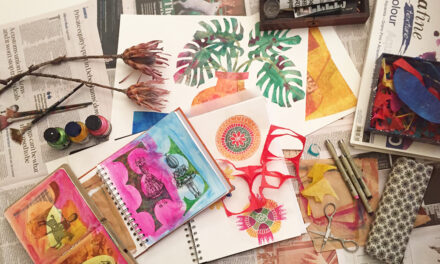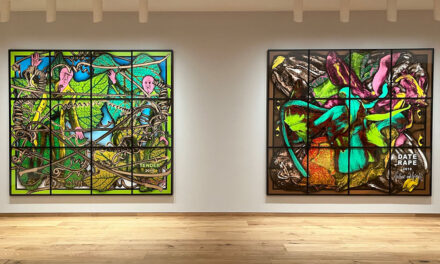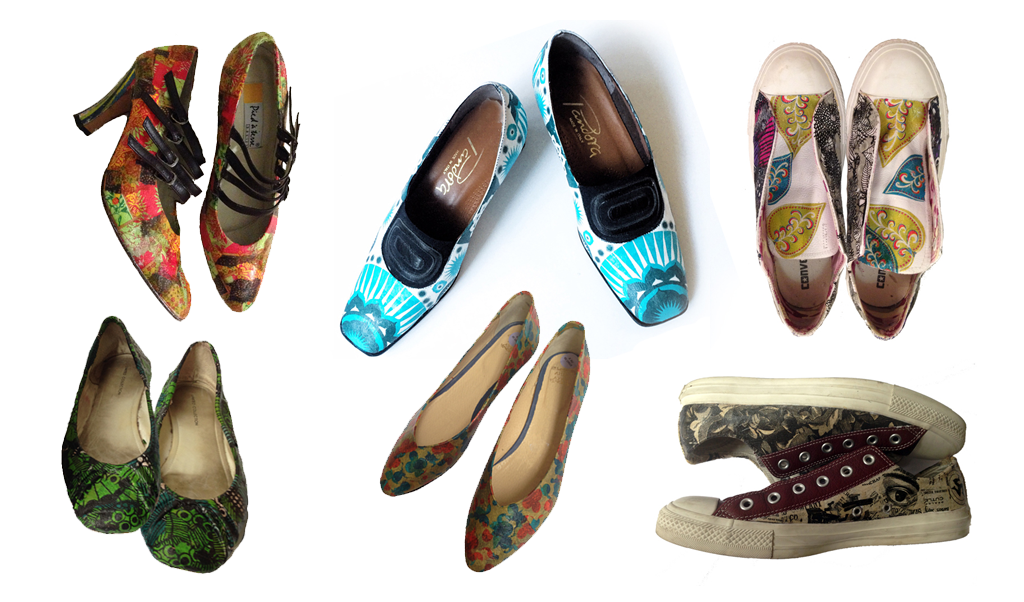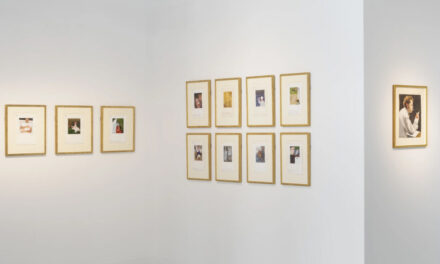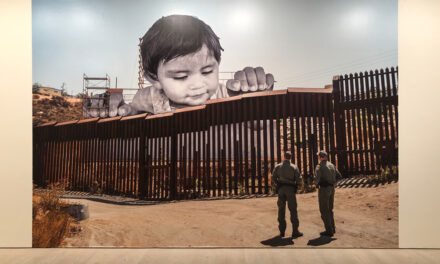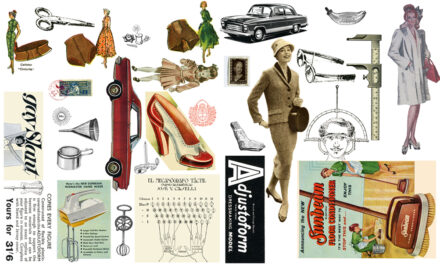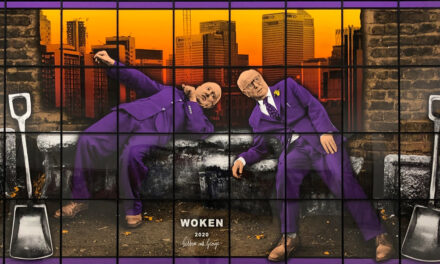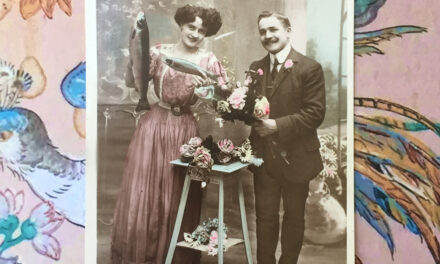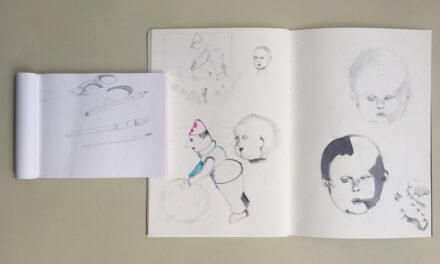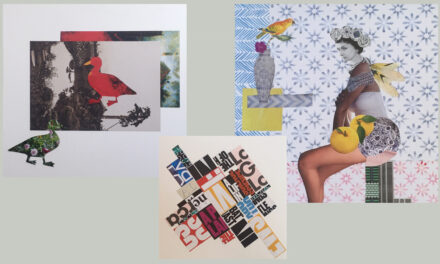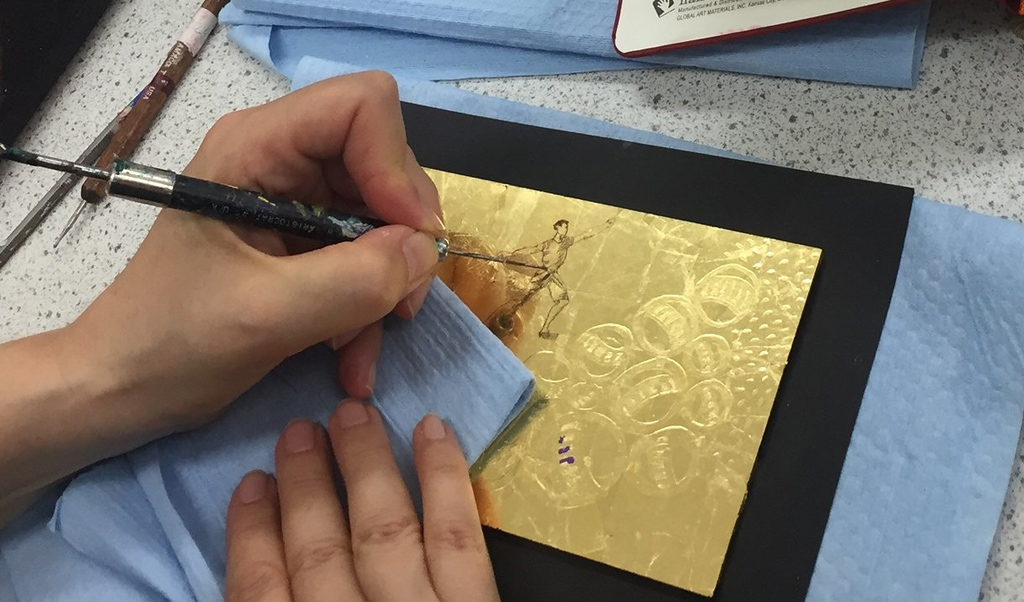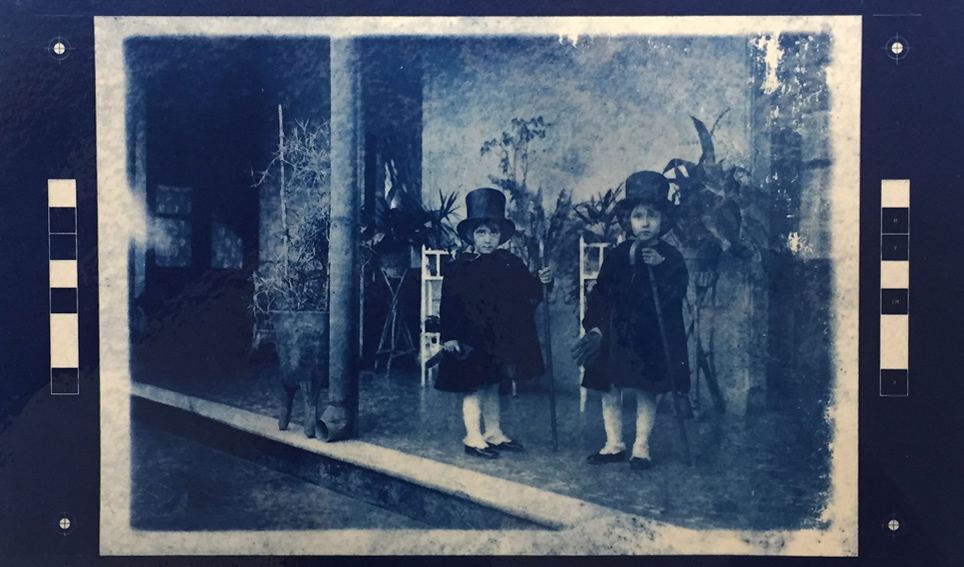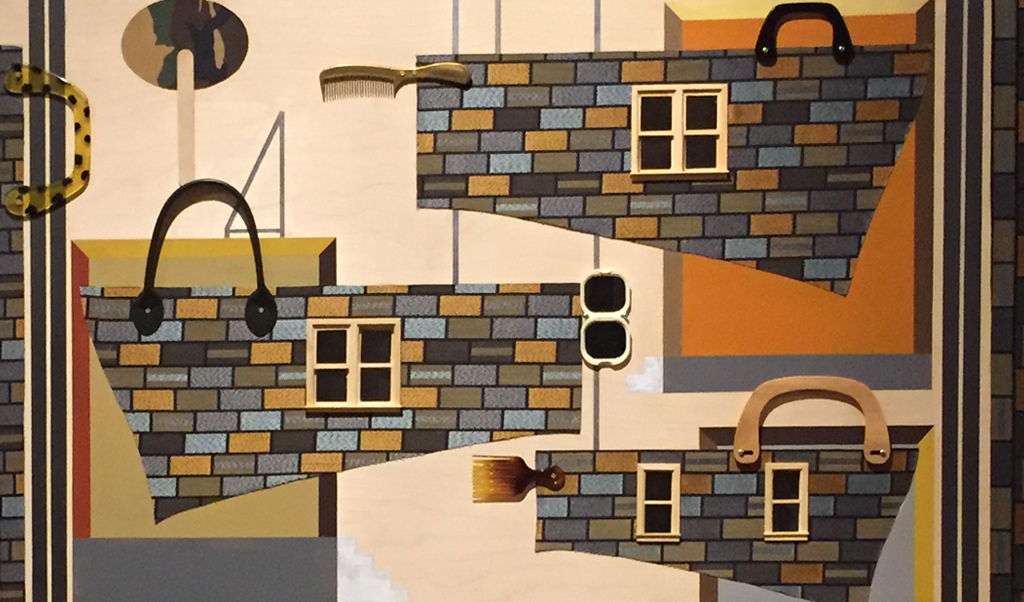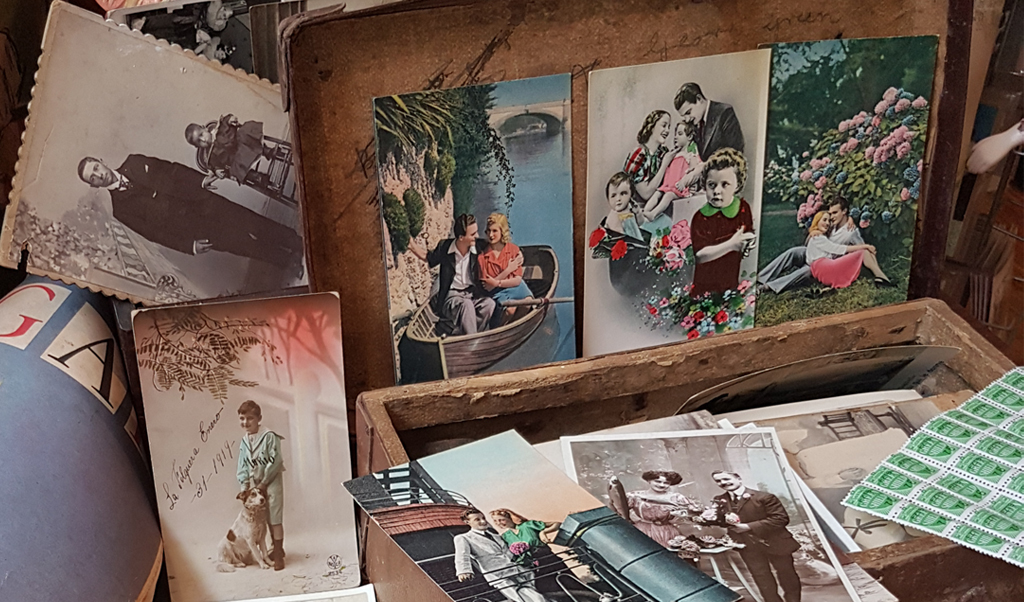As we are all stuck at home at the moment, I wanted to share a few collage-making ideas with you. The wonderful thing about this technique is that we all have the materials at home – in fact, a lot of them end up in the bin, so it’s a good way of recycling as well as exercising your creativity. And if you manage to focus on the activity per-se, without an end in mind, it can also be wonderfully meditative.
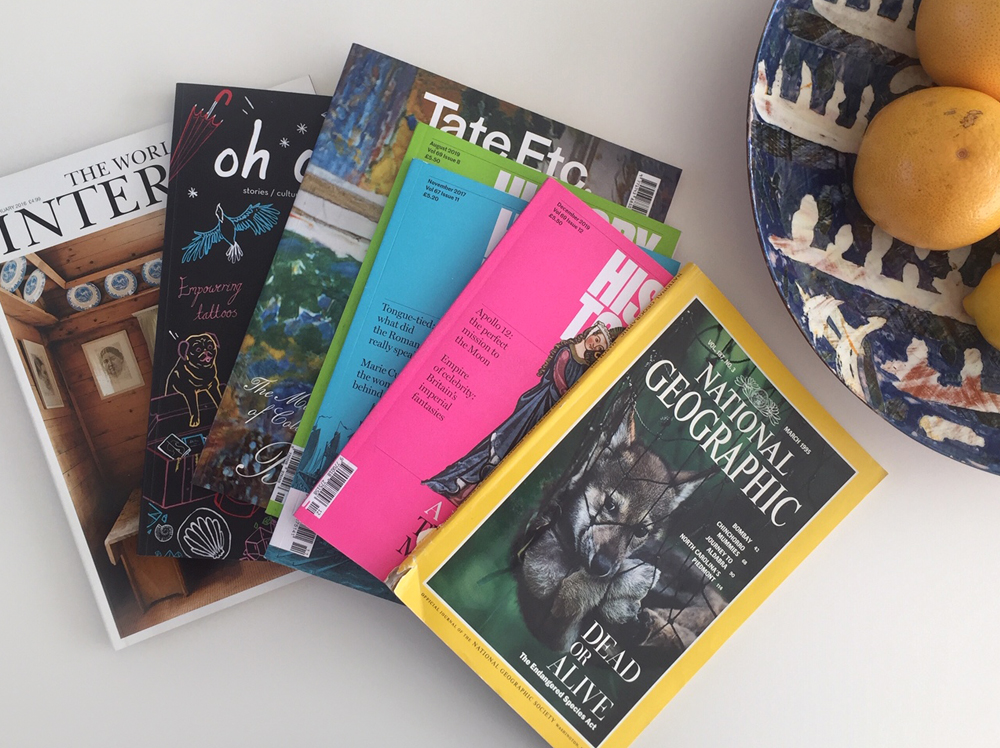
Here is what you’ll need:
- Support: this is the base on which you build the collage. Suitable materials include cardboard (think broken-up boxes from all those online deliveries!), wood, hardboard, card or paper. If given a choice, I prefer to use 300 gsm watercolour paper.
- Patterned papers: magazine, newspaper and book pages, envelopes, junk mail, used giftwrap.
- Glue: PVA, glue stick or liquid clear adhesive such as Pentel. My favourite is Tombow mono aqua liquid glue but that may be tricky to source right now.
- Small scissors, scalpel, cutting mat.
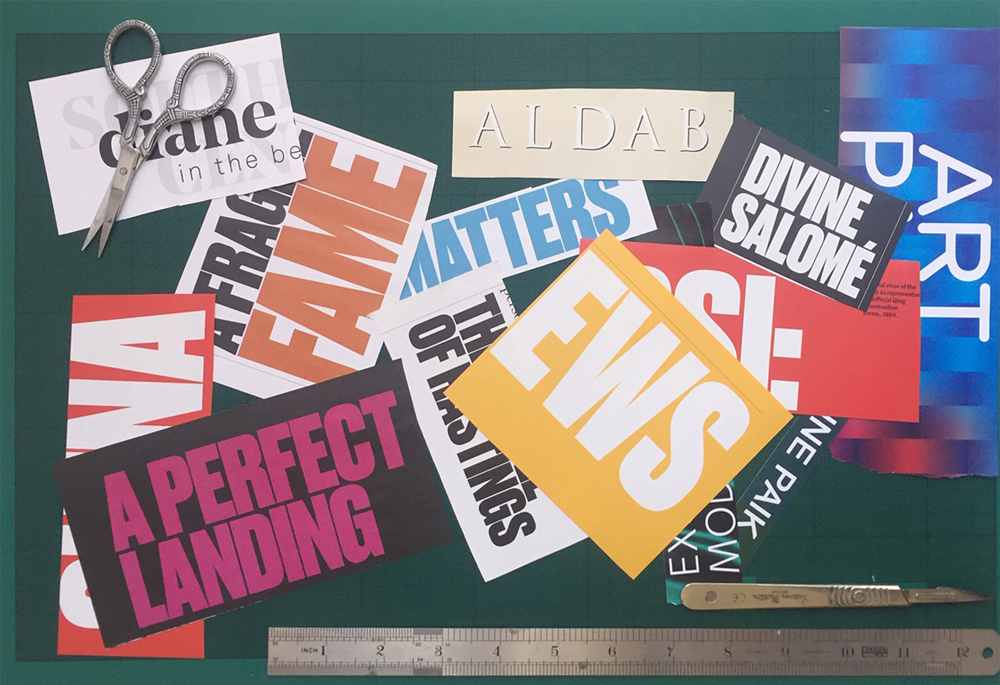
Work with self-imposed constraints:
I know you’ll probably think we are living with enough external constraints right now but hear me out: when creating collages it is very helpful to work to a specific prompt, as this provides a focus when you’re sifting through images. For example, you may want to use just typography or numbers. I decided to go for letters only and came up with these two collages:
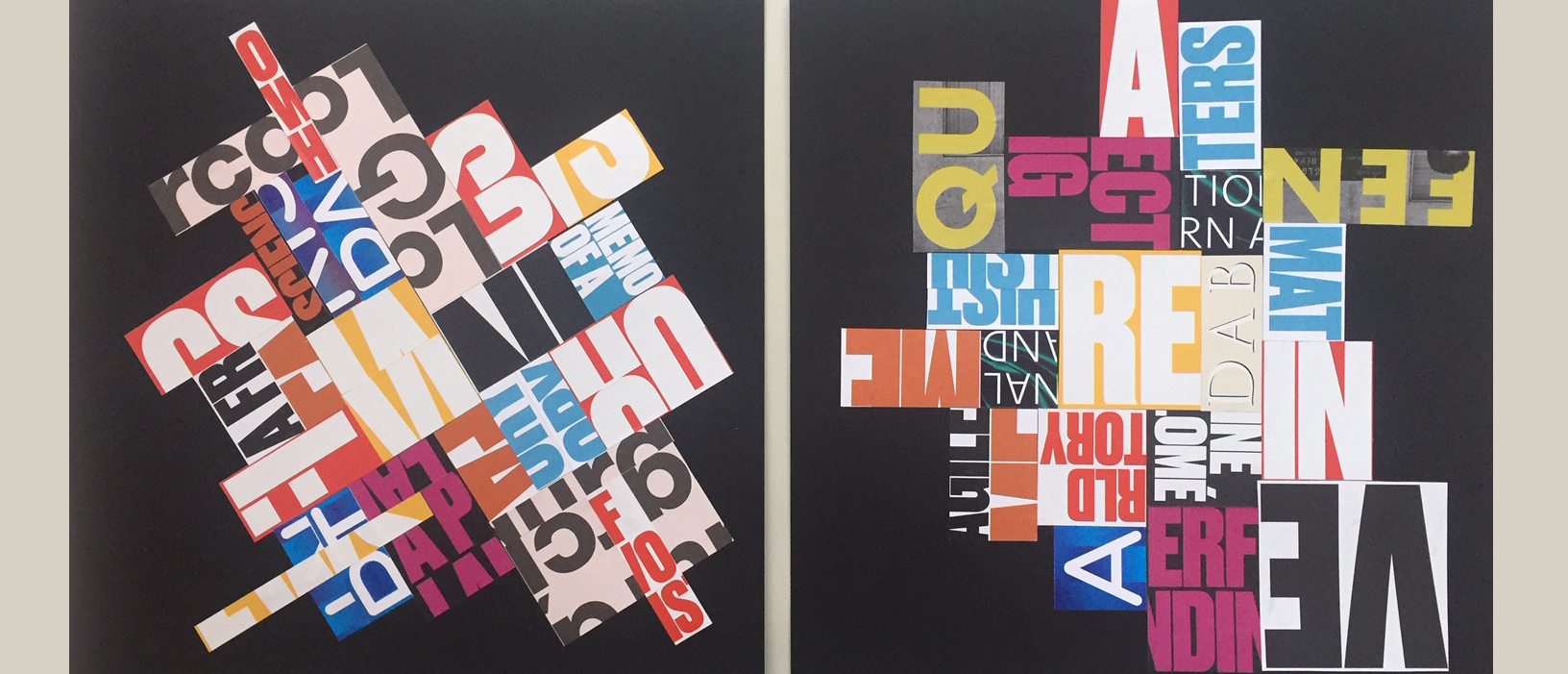
Or you could cut up 2-3 pages in strips, rectangles, triangles or squares and then re-assemble them. Here is ‘Rembrandt-Vermeer’, a wonderful example using strips by the talented Jiri Kolář, a talented Czech artist and poet who lived between 1914 and 2002:
Another idea is to use a figure as a stencil to cut one or more shaped ‘windows’ from a magazine/newspaper/book page. You can use both the cut-out and the window in the same composition. I cut up a duck shape from clip art (lots of free downloads available online, or draw your own) in two sizes and used it to create the two collages that follow. The advantage of this technique is that you can try your ‘window’ on different backgrounds until you find one that works.
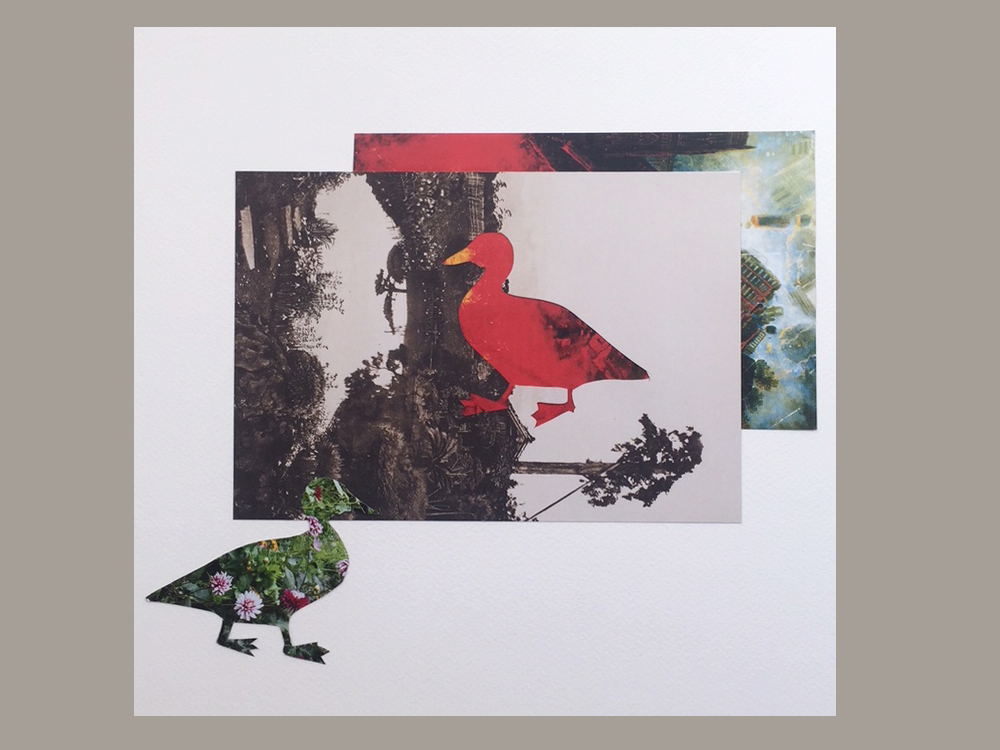
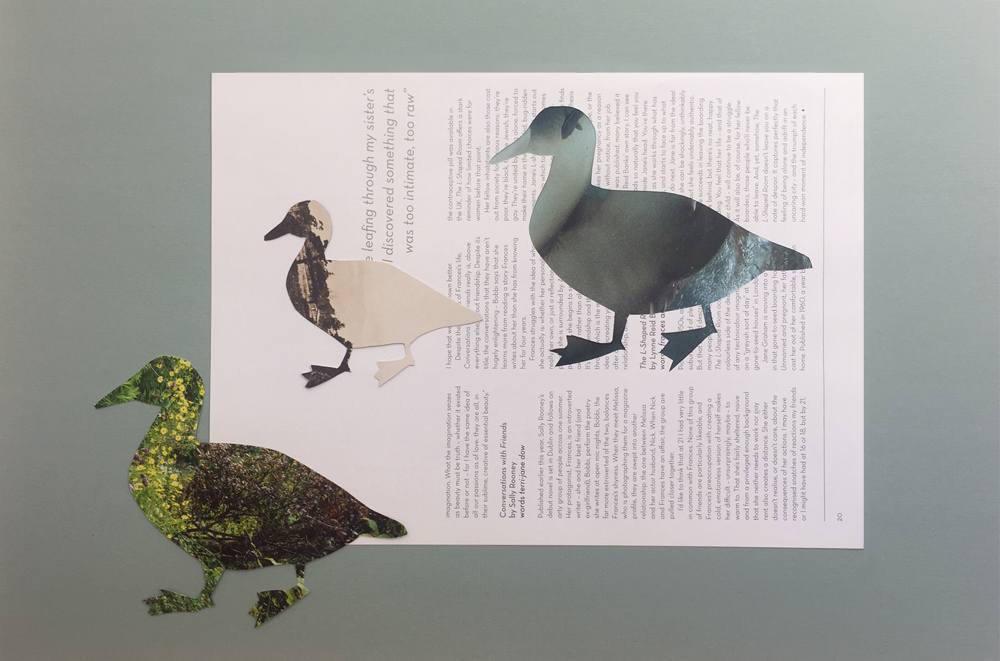
Another fun idea is to start with a human figure and then replace parts of the body with other elements, or with different legs, arms, and so on, as in these two examples by students who attended my collage workshops:
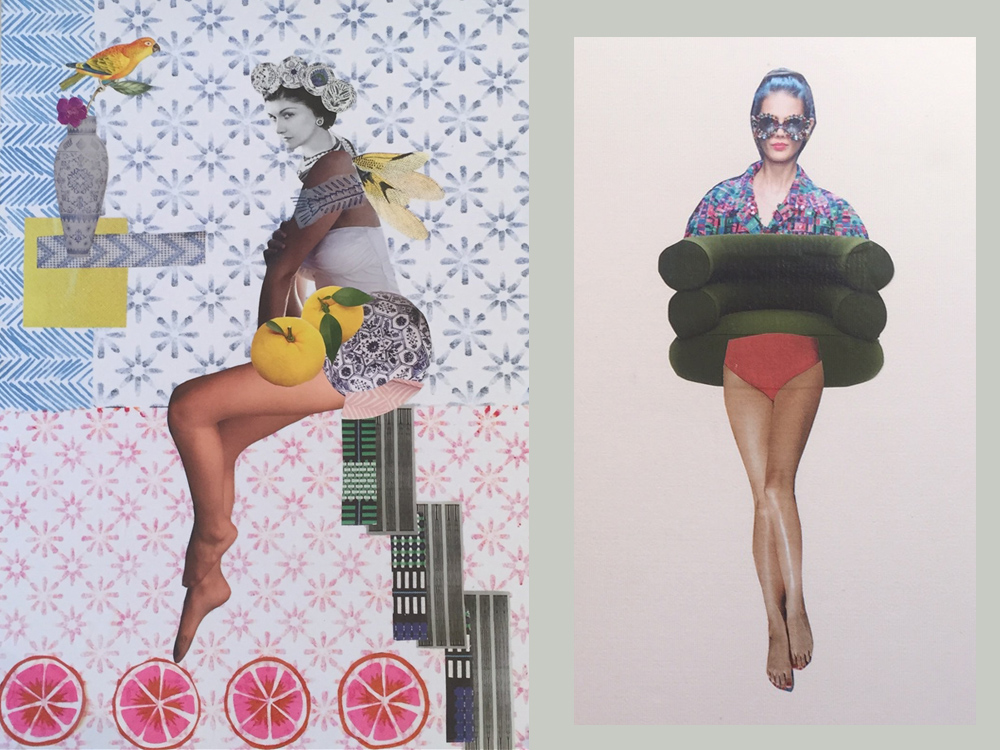
I’ll leave you with a few more suggestions:
- Use just two images to create a collage, but flip one of them upside down.
- Create a series of small collages that tell a simple story or fairy tale. Add speech bubbles if you like.
- Use reverse scale: for example, big insects paired with small houses, or big kitchen utensils with small people.
- Make a collage using shades of just one colour.
- Take an image, cut it up into squares or rectangles of the same size and reassemble it into an abstract collage.
For more inspiration do take a look at my collages and prints here, and if you have any questions please post them on my facebook page and I’ll be happy to help.
